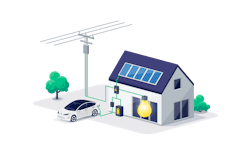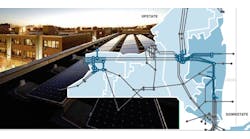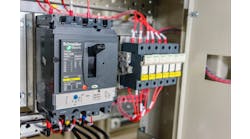The Public Utility Commission of Texas (PUCT) announced that two virtual power plants (VPP) are now available to provide dispatchable power to the state’s electric grid, which is operated by the Electric Reliability Council of Texas (ERCOT).
The VPPs are a part of the PUCT’s Aggregate Distributed Energy Resource pilot project.
VPPs are similar to microgrids
Virtual power plants are similar to microgrids in that they utilize distributed energy resources (DERs) such as solar plus storage systems and electric vehicles (EVs) to create a reliable power network. The difference is that VPPs aggregate energy from resources located at multiple sites, delivering it as a single energy source to the grid, just as a centralized power plant would.
Microgrids, on the other hand, use connected DERs to power a defined area, such as a college campus or business, independently of the main power grid – providing resilience to the microgrid owner.
Making the most of small energy devices
In Texas, the VPP pilot program is testing the use of small (1 MW or less) consumer-owned energy devices, such as battery storage systems and backup generators, as resources in the wholesale energy market.
The goal is to strengthen grid reliability in a state that’s struggled with the impact of extreme weather events in recent years.
“Small energy resources found in homes and businesses across Texas have incredible potential to continue improving grid reliability and resiliency by selling the excess power they generate to the ERCOT system,” said Will McAdams, PUCT commissioner.
According to the PUCT, Texas homeowners and businesses have added 300 MW of small energy resources so far this year, bringing the total across the state to 2.3 GW.
Each VPP will coordinate the operation of the connected devices so that collectively it becomes another dispatchable power source for ERCOT during times of high demand. Each individual energy device in the pilot program can contribute no more than 1 MW.
The VPP will also have the ability to reduce demand on the grid. In addition to power generation devices, each VPP must include smart thermostats, controllable EV chargers, smart water heaters or other demand response devices.
“This pilot project is an opportunity for us, the electric industry, and participants to learn how to harness these resources to support reliability in the ERCOT market,” said Pablo Vegas, ERCOT president and CEO.
Innovative Virtual Power Plant Projects are Fascinating and Initiate Great Discussions
Microgrid 2024: A Revolution in Energy
First VPPs now online, more to come
One of the VPPs aggregates customers in the Houston area, and the other is focused on Dallas. In both cases, participants are Tesla Electric customers that have Powerwall storage systems in their homes and have volunteered to sell their excess energy to ERCOT.
The “launch of the first phase of the Tesla Virtual Power Plant is a milestone for Texas residents, Texas distribution utilities and the ERCOT grid,” said Drew Baglino, senior vice president of powertrain and energy engineering at Tesla. “Our collective work has allowed Tesla to build a decentralized energy ecosystem that seamlessly integrates stored solar energy from Powerwalls onto the ERCOT grid.”
In addition to the two VPPs announced this week, there are six more in various stages of the commissioning process. All told, there will be eight VPPs in the pilot program, totaling 7.2 MW.
“It’s a win-win for Texas,” McAdams said. “Home and business owners get paid for power they supply and consumers in ERCOT get more reliability.”
Stay up to date on the latest microgrid news. Subscribe to the free Microgrid Knowledge Newsletter.








